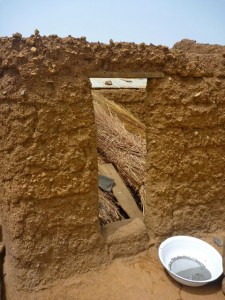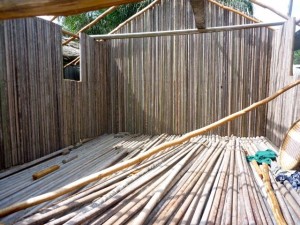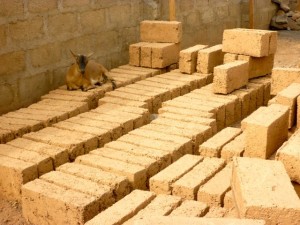Many times in Ghana I have thought about the story of the three little pigs. Each of the pigs had built his house out of different materials, each of these houses suffered a different fate at the hands of the wolf. In Ghana, people use a range of materials for building their homes. Some are a reflection of the natural environment, and each has it’s own pros and cons.

I will start with the most stereotypical of examples. Yes… there are mud huts in Ghana. The designs of these homes are really clever; builders will wet the dirt and either use it to form bricks, or to simply mold a wall. When using the mud to mold a wall they will usually work in layers, letting each layer dry as the wall grows taller. The bricks are just mud shaped and left out to dry. For a roof they may mold one out of mud, or use dried palms to create a thatched roof. A mud roof is flat and sturdy, allowing people to sleep outside when it becomes very hot. A thatched roof allows air to move and keeps the room extremely cool. Mud structures are sometimes seen along the coast, but they are extremely common as you travel north. Presumably because it is a drier climate.
On my more recent journeys to the Western Region, I noticed another material used to construct homes. Out there they use a type of wood called raffia, it is thin and hollow but seemingly sturdy when held together to form walls. At the stilt village there were points where we were standing over water supported only by a raffia floor (and Fox only fell through once!) So while it looks brittle the stuff is actually pretty strong.

The problem with both of the materials listed above is upkeep and maintenance. Mud walls have to be patched up after a lot of rain, and raffia can rot through. That brings us to the third material which is concrete. People will usually form bricks of concrete to make a new building. Sometimes for archways and pillars and other non-rectangular shapes, a mold is built out of wood and filled with the concrete. The benefit of using concrete is that it lasts longer, but it also costs money (as opposed to mud and wood, which are found locally.)
It’s interesting to me to see how the people here have used the things around them to create homes. What’s even more amazing is that these materials are used in such a way that these homes manage to stand up fairly well to rain. I’m pretty sure that if I tried to build a mud or stick house, it would collapse even without the help of rain.
